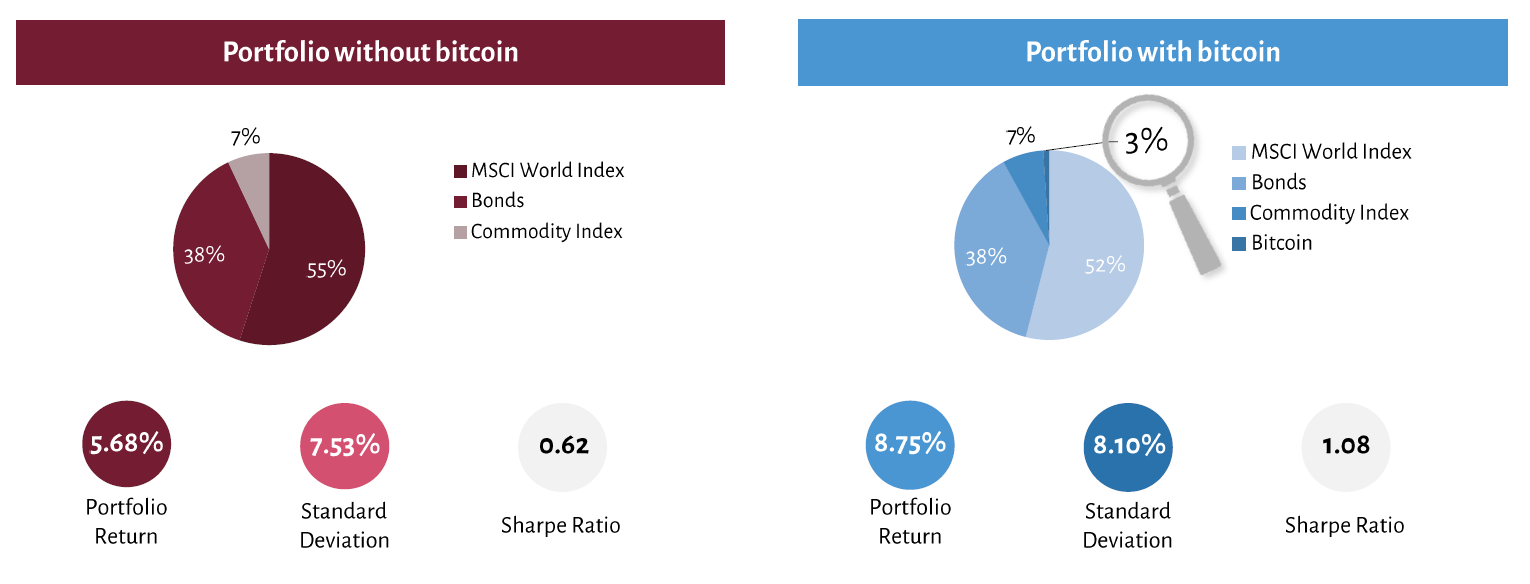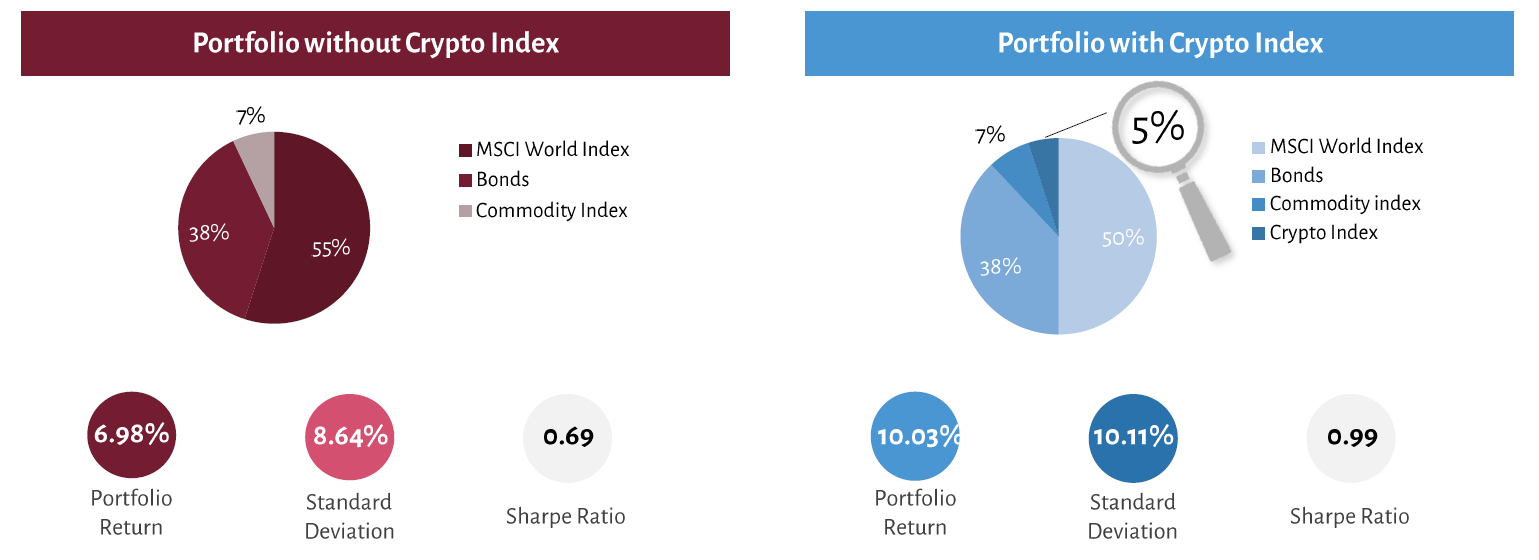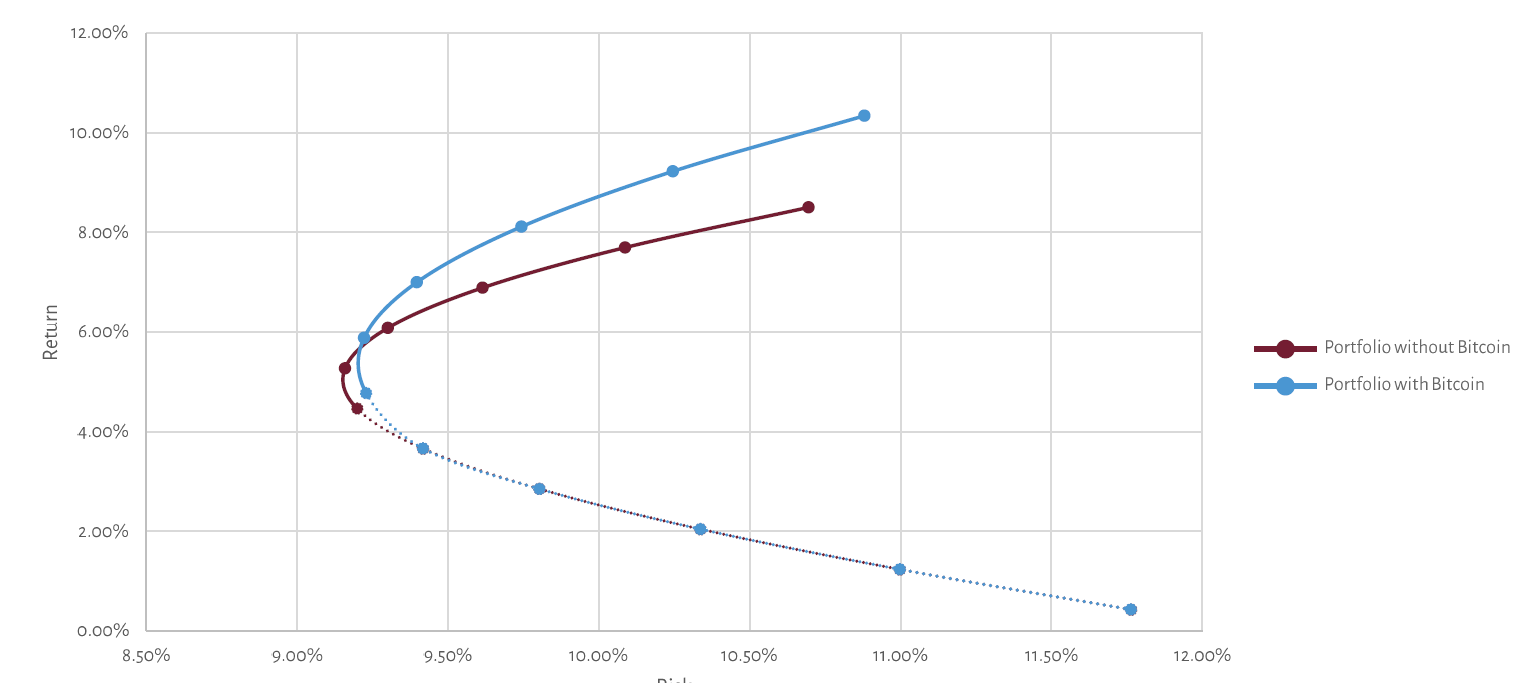The fact that digital assets such as Bitcoin and other cryptocurrencies have become of increasing relevance in recent years is demonstrated, among other things, by the fact that even well-known innovative companies such as Tesla are investing in Bitcoin. What is clear is that Bitcoin and digital assets are here to stay.
However, not only Bitcoin alone, but also a combination of a wide variety of cryptocurrencies in the form of a Crypto Index can represent a smart diversification of a portfolio not correlated with traditional asset classes. In the past year, large publicly traded companies such as MicroStrategy and Tesla have invested in Bitcoin in serious quantities. At the same time, El Salvador has emerged as the first nation-state to declare Bitcoin legal tender in September 2021.
While MicroStrategy, Tesla or El Salvador are among the most illustrious Bitcoin investors, they are just the tip of an ever-growing iceberg. More and more investors - from retail investors to institutional players - are buying into the digital asset market.
A new asset class
For a growing number of investors, cryptocurrencies and digital assets have long since become an asset class in their own right. According to professional market analysts, they are to be placed alongside art, hedge funds or commodities among alternative investments.
Among cryptocurrencies, Bitcoin still stands out. As the figures impressively show, Bitcoin was the best performing asset of the past decade. Still the most prominent cryptocurrency, it accounts for around 40% of the total market capitalization of this new asset class. This fact is also due to the diversity of Bitcoin investment products. For example, the first bitcoin futures ETFs were launched in the US in the last quarter of 2021.
Bitcoin: a smart portfolio diversifier
The impressive performance of digital assets over the past years can also be put into a portfolio context. The portfolio comparison for portfolios with and without bitcoin allocation shows that relevant portfolio parameters improve with a bitcoin allocation.
This can be illustrated by a concrete example of a classic portfolio (These are sample portfolios, all information without liability). This contains 55% equities (MSCI World Index), 38% bonds (TIPS Bond ETF) and 7% commodities (Invesco DB Commodity ITF). For the period from 2015 to 2021, this diversified portfolio has generated an annual return of 5.68% with a standard deviation (volatility) of 7.53%.
Adding only 3% Bitcoin at the expense of the equity portion, which itself performed well, has a positive effect on the portfolio. Thus, the performance of the portfolio could be increased to an annual return of 8.75% thanks to Bitcoin allocation, while the standard deviation increased only minimally to 8.10%. This positive effect of Bitcoin is also reflected in the change of the Sharpe Ratio, a commonly used portfolio metric to show the risk-adjusted return.
A high Sharpe ratio indicates that a high performance has been achieved with a relatively low risk. The higher the Sharpe ratio for a selected portfolio compared with a benchmark portfolio, the better the risk/return ratio of the former compared with the latter. For the selected example, the Sharpe Ratio for the classic portfolio without Bitcoin addition is 0.62. The addition of Bitcoin increases the Sharpe Ratio to 1.08. This fact allows the following conclusion: Bitcoin correlates little with conventional asset classes and represents a reasonable diversification of a classic portfolio.
Other digital assets - same effect
In the meantime, there are countless other cryptocurrencies that also commonly fall under the term digital assets. Some of them have now reached a considerable market capitalization and are therefore also taken seriously by professional investors.
The same classic portfolio (These are sample portfolios, all information without liability) can also be compared to a portfolio that has been supplemented with a combination of different cryptocurrencies. Cryptocurrencies that can be found among the top 10 in terms of market capitalization were selected and combined to form a Crypto Index. This is composed as follows: 5% Bitcoin (BTC), 5% Bitcoin Cash (BCH), 10% Ether (ETH), 40% Cardano (ADA) and 40% Ripple (XRP). Together, these cryptocurrencies make up 5% of the total portfolio, which are included in the portfolio instead of stocks. Due to the younger age of these cryptocurrencies compared to Bitcoin, a more recent and therefore shorter time period of 2018 to 2021 was considered.
The classic portfolio without crypto allocation achieved a return of 6.98% with a standard deviation of 8.64% during this period. By adding the selected cryptocurrencies, the performance increased from 10.11% to 10.03% with a standard deviation during the same period. Likewise, the Sharpe Ratio changes from 0.69 to 0.99. Thus, this example shows: Not only Bitcoin alone, but also a combination of various cryptocurrencies in the form of a Crypto Index can represent a meaningful diversification of a portfolio.
A shift in the efficiency curve
The advantage of adding cryptocurrencies is also illustrated by the so-called efficiency curve. This shows the highest possible return and the greatest risk that different portfolio allocations can have. Since the return is shown on the Y-axis and the risk on the X-axis, a shift of the efficiency curve upwards meant that a higher return can be achieved for a corresponding portfolio with the same risk.
Such an upward shift of the efficiency curve results for those portfolios (These are sample portfolios, all information without liability) to which digital assets have been allocated as an add-on. In other words, at the same level of risk, adding cryptocurrencies can achieve a higher return - or adding them at the same level of return can lower the risk.
Relevant for the future?
Given these findings from portfolio theory, the question arises: Will the positive effect of an admixture of cryptocurrencies be able to hold up in the future? It is a well-known fact that collected data is always from the past and does not provide guaranteed statements about the future. Looking in the rearview mirror makes performance and the risk-return ratio appear positive. However, why should portfolio findings apply in the immediate future? In Bitcoin's favor is its progressive establishment as digital gold. Bitcoin's promise of scarcity has held over the past 12 years, and with each additional year that it holds, it solidifies in the minds of an ever-increasing number of people.
Bitcoin's strength as an investment becomes particularly clear when other asset classes are put in relation to the central banks' money supply expansion. For example, comparing the S&P 500 not to its dollar valuation, but to the Fed balance sheet, shows that the price increases are due to a strong expansion of the money supply. If one chooses the correct denominator - the central bank balance sheet, that is - prices are flat. Over the past decade, the S&P500 has grown nominally by an average of 15% per year. Interestingly, this is pretty much in line with the annual expansion of the U.S. Federal Reserve balance sheet.
As a kind of hedge against perpetual monetary expansion by central banks, Bitcoin and other cryptocurrencies are likely to continue to find favor in the near future. The end of the acceptance curve is likely to be far from reached. If cryptocurrencies continue their triumphant march, Bitcoin and other digital assets will also prove to be a smart, non-correlated diversification for a portfolio in the near future.







